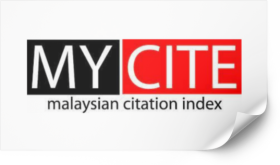Marine Hydrokinetic Energy Potential of Peninsular Malaysia by using Hybrid Site Selection Method
DOI:
https://doi.org/10.37934/progee.26.1.110Keywords:
Marine renewable energy, Hydrokinetic energy, Site selectionAbstract
The exponential increase in global energy demand is a direct result of the rapid growth of the world's population and technological advancements. However, the use of fossil fuels to meet this demand has led to the issue of CO2 emission and global warming, which prompting nations to undertake mitigation plans for further negative repercussions. Seeing the fact that extensive usage of non-renewable energies is the root cause of these negative effects, renewable energies have become the focus of most research. On top of that too, the implementation of clean energy is urgent to achieve sustainable development. Located in Southeast Asia, Peninsular Malaysia is surrounded by the Strait of Malacca and the South China Sea, making it abundant in the source of hydrokinetic energy. Consequently, researchers have taken a keen interest in exploring marine renewable energy within the region. Coastal regions particularly, can significantly benefit from hydrokinetic energy. Henceforth, this study aims to provide a comprehensive approach to identify the optimal locations for marine hydrokinetic energy extraction in Peninsular Malaysia, considering all essential factors that influence decision-making.
References
International Energy Agency (IEA), Renewables 2019: Analysis and forecast to 2024, 2019. https://www.iea.org/reports/renewables-2019 (accessed September 25, 2023).
J. Rogelj, M. Elzen, N. Hohne, T. Fransen, H. Fekete, H. Winkler, R. Schaeffer, F. Sha, K. Riahi, and M. Meinshausen, Paris agreement climate proposals need a boost to keep warming well below 2°C, Nature 534 (2016) 631–639. https://doi.org/10.1038/nature18307.
A.G. Olabi, K. Obaideen, K. Elsaid, T. Wilberforce, E.T. Sayed, H.M. Maghrabie, M.A. Abdelkareem, Assessment of the pre-combustion carbon capture contribution into sustainable development goals SDGs using novel indicators, Renewable and Sustainable Energy Reviews 153 (2022) 111710. https://doi.org/10.1016/j.rser.2021.111710.
X. Yang, J. Pang, F. Teng, R. Gong, C. Springer, The environmental co-benefit and economic impact of China’s low-carbon pathways: Evidence from linking bottom-up and top-down models, Renewable and Sustainable Energy Reviews 136 (2021) 110438. https://doi.org/10.1016/j.rser.2020.110438.
L. Gustavsson, T. Nguyen, R. Sathre, U.Y.A. Tettey, Climate effects of forestry and substitution of concrete buildings and fossil energy, Renewable and Sustainable Energy Reviews 136 (2021) 110435. https://doi.org/10.1016/j.rser.2020.110435.
J. Curtin, C. McInerney, B. Ó Gallachóir, C. Hickey, P. Deane, P. Deeney, Quantifying stranding risk for fossil fuel assets and implications for renewable energy investment: A review of the literature, Renewable and Sustainable Energy Reviews 116 (2019) 109402. https://doi.org/10.1016/j.rser.2019.109402.
S. Ashok, Optimised model for community-based hybrid energy system, Renewable Energy 32 (2007) 1155–1164. https://doi.org/10.1016/j.renene.2006.04.008.
X. He, F. Wang, T.J. Wallington, W. Shen, M.W. Melaina, H.C. Kim, R. De Kleine, T. Lin, S. Zhang, G.A. Keoleian, X. Lu, Y. Wu, Well-to-wheels emissions, costs, and feedstock potentials for light-duty hydrogen fuel cell vehicles in China in 2017 and 2030, Renewable and Sustainable Energy Reviews 137 (2021) 110477. https://doi.org/10.1016/j.rser.2020.110477.
IPCC, IPCC Special Report on Renewable Energy Sources and Climate Change Mitigation, Intergovernmental Panel on Climate Change, 2011.
International Renewable Energy Agency, Renewable Energy Statistics 2019, International Renewable Energy Agency, 2019.
R. Pelc, R.M. Fujita, Renewable energy from the ocean, Marine Policy 26 (2002) 471–479. https://doi.org/10.1016/S0308-597X(02)00045-3.
H. Faez Hassan, A. El-Shafie, O.A. Karim, Tidal current turbines glance at the past and look into future prospects in Malaysia, Renewable and Sustainable Energy Reviews 16 (2012) 5707–5717. https://doi.org/10.1016/j.rser.2012.06.016.
M.W. Abd Rahim, A.A. Rahman, M. Izham, N.A.M. Amin, Tidal Energy in Malaysia: An overview of potentials, device suitability, issues and outlook, Regional Studies in Marine Science 61 (2023) 102853. https://doi.org/10.1016/j.rsma.2023.102853.
M.J. Khan, G. Bhuyan, M.T. Iqbal, J.E. Quaicoe, Hydrokinetic energy conversion systems and assessment of horizontal and vertical axis turbines for river and tidal applications: A technology status review, Applied Energy 86 (2009) 1823–1835. https://doi.org/10.1016/j.apenergy.2009.02.017.

Downloads
Published
How to Cite
Issue
Section
License
Copyright (c) 2023 Progress in Energy and Environment

This work is licensed under a Creative Commons Attribution-NonCommercial 4.0 International License.











